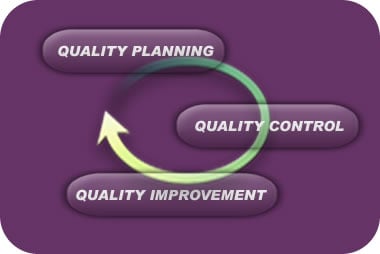The Juran Trilogy was developed by Dr. Joseph Juran, and it’s something I learned about recently in my Total Quality Management and Six Sigma course. The Juran Trilogy is an improvement cycle that is meant to reduce the cost of poor quality by planning quality into the product/process.
The Juran Trilogy
1. Quality Planning
In the planning stage, it is critical to define who your customers are and find out their needs (the “voice of the customer”). After you know what your customers need, you’re able to define the requirements for your product/process/service/system, etc., and develop it. Additionally, any plans that might need to be transferred to operators or other key stakeholders should be done during the planning phase. Planning activities should be done with a multidisciplinary team, with all key stakeholders represented.
2. Quality Control
During the control phase, determine what you need to measure (what data do you need to know if your process is working?), and set a goal for your performance. Get feedback by measuring actual performance, and act on the gap between your performance and your goal. In Statistical Process Control (SPC), there are several tools that could be used in the “control” phase of the Juran Trilogy: Pareto Analysis, flow diagrams, fishbone diagram, and control charts, to name a few.
3. Quality Improvement
There are four different “strategies” to improvement that could be applied during this phase:
- Repair: Reactive; fix what’s broken.
- Refinement: Proactive; continually improve a process that isn’t broken (like the continual pursuit of perfection in Lean!)
- Renovation: Improvement through innovation or technological advancement
- Reinvention: Most demanding approach; start over with a clean slate.
